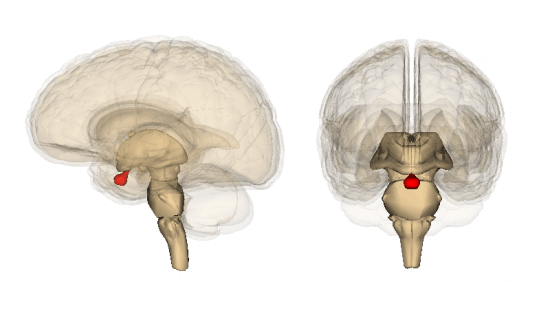
Also called the “master gland”, the pituitary gland is an important part of the endocrine system. Its purpose is to make sure the body produces the correct type and amount of hormones at all times. This is essential for the body to stay healthy.
1. Endocrine System
The endocrine system works with the nerves to transfer information throughout the body. This information comes in the form of chemicals called hormones that are released in the blood. The blood carrying hormones travels to various organs in the body telling it what to do.
2. Location
The pituitary gland is the size of a pea and is located at the base of the brain. It is directly connected to the hypothalamus by a small tube called the pituitary stalk.
3. Why We Need Hormones
Every hormone is produced in specific amounts to cause a reaction in the body. An example is the growth hormone. This important hormone tells the body to grow, which effects things such as height and weight. Our body’s organs have to receive direction in the form of hormones to tell it how to grow and keep us healthy. All of the directions come from the tiny pea sized pituitary gland.
4. Inside the Pituitary Gland
The pituitary gland sends out hormones that cause a variety of organs to work properly. The main ones are; adrenocorticotopic hormone, anti-diuretic hormone, growth hormone, follice-stimulating hormone, luteinizing hormone, prolactin, and thyroid-stimulating hormone. Each of these hormones has its own purpose to keep the body growing and healthy.
5. Teammates
The endocrine system also includes other glands and organs that work with the pituitary. These include; thyroid, parathyroids, adrenal glands, pineal body, pancreas, reproductive glands, and the hypothalamus. Each of these is in charge of delivering hormones to different parts of the body and works with the pituitary gland’s role as the “boss” gland.
6. Anterior and Posterior
The anterior (front) of the pituitary gland is also called the adenophyophysis. It sends out hormones to other parts of the endocrine system. The posterior (back) is also called the neurohypophysis. It is less like an organ and works more like a part of the hypothalamus. It is connected directly to the pituitary stalk that leads to the hypothalamus.
7. The Intermediate Lobe
Between the anterior and posterior parts of the pituitary gland is the intermediate lobe. This very small area is responsible for producing the hormone that causes our skin color to darken before we are born.
8. Diseases of the Pituitary
The most common problem with the pituitary gland is when a tumor forms there. This can cause the gland to not work properly. If the pituitary is not working, the rest of the body does not receive the directions it needs to stay healthy. This can affect all areas of the body but may be hard to diagnose at first.
9. The Hypothalamus: Pituitary Gland’s Partner
The hypothalamus is a portion of the brain that is located right above the pituitary gland. This close neighbor works in a partnership with the pituitary by connecting it to the bodies nervous system. Signals from the hypothalamus are what tells the pituitary gland to release hormones. It transfers information to the gland using both hormones and electrical messages.
10. Puberty: The Pituitary Gland’s Role
One of the most important roles that the pituitary gland plays is regulating the reproductive hormones. These start becoming noticeable when a person enters puberty. When a person becomes a certain age, it is the pituitary gland that releases hormones to make the changes that come along with puberty. This makes it possible for the body to reproduce and is the reason that a baby can be created.

Leave a Reply